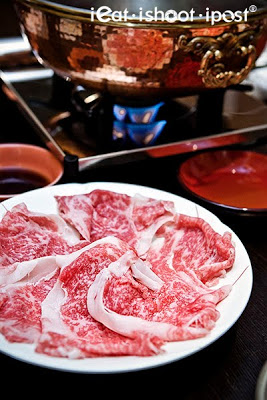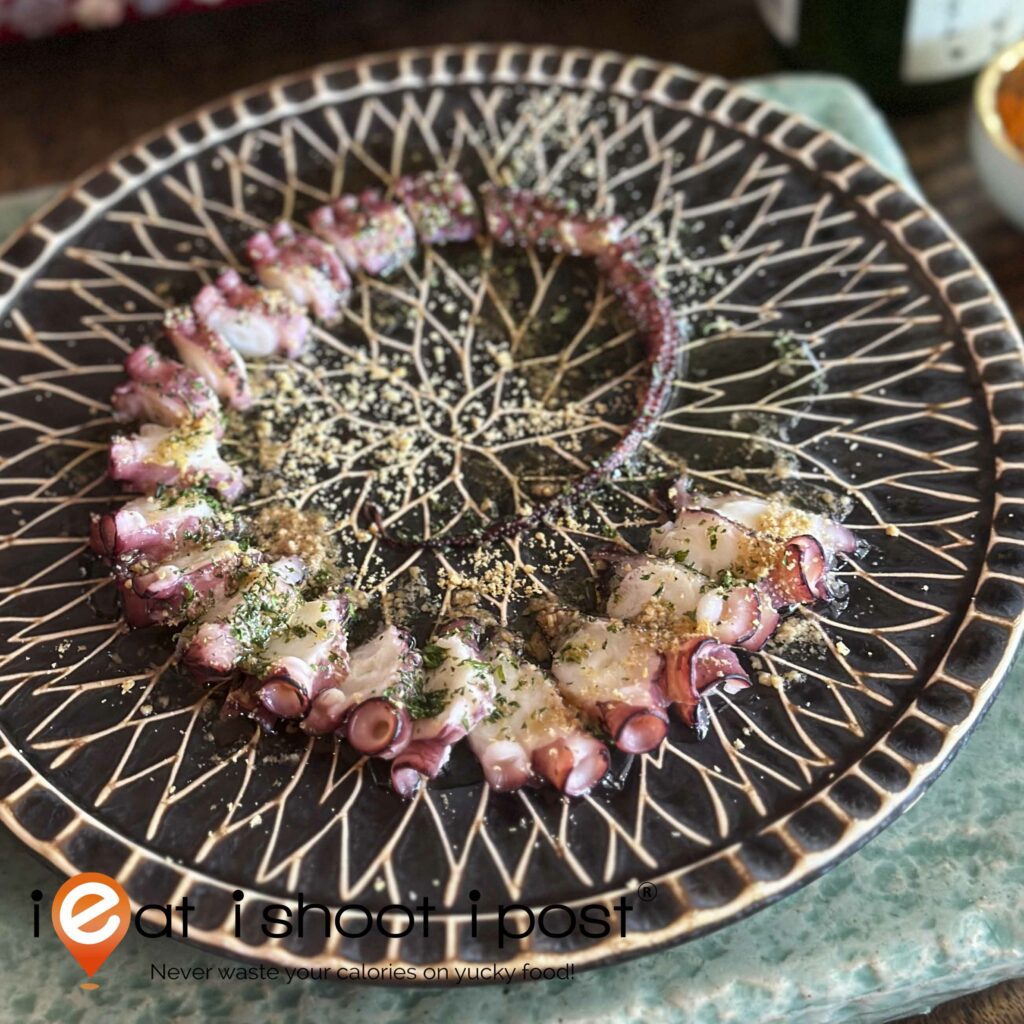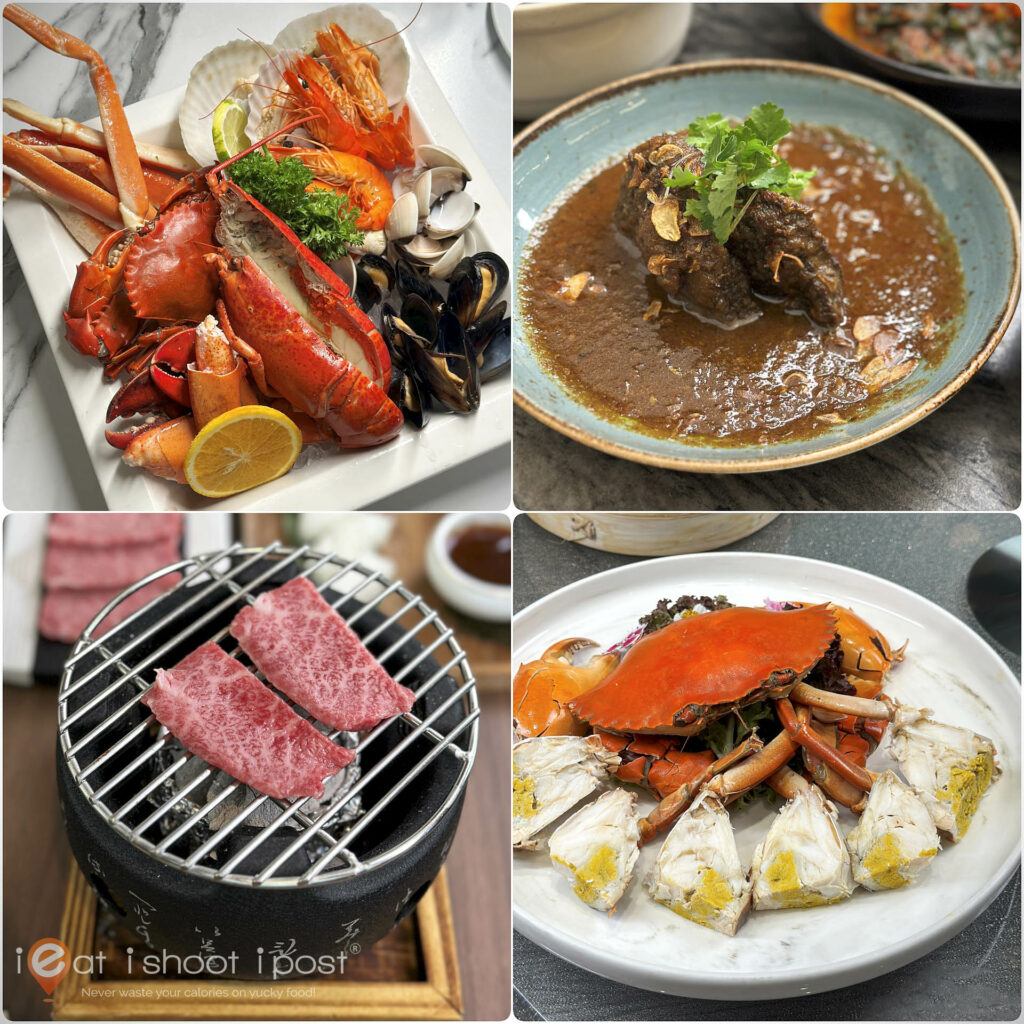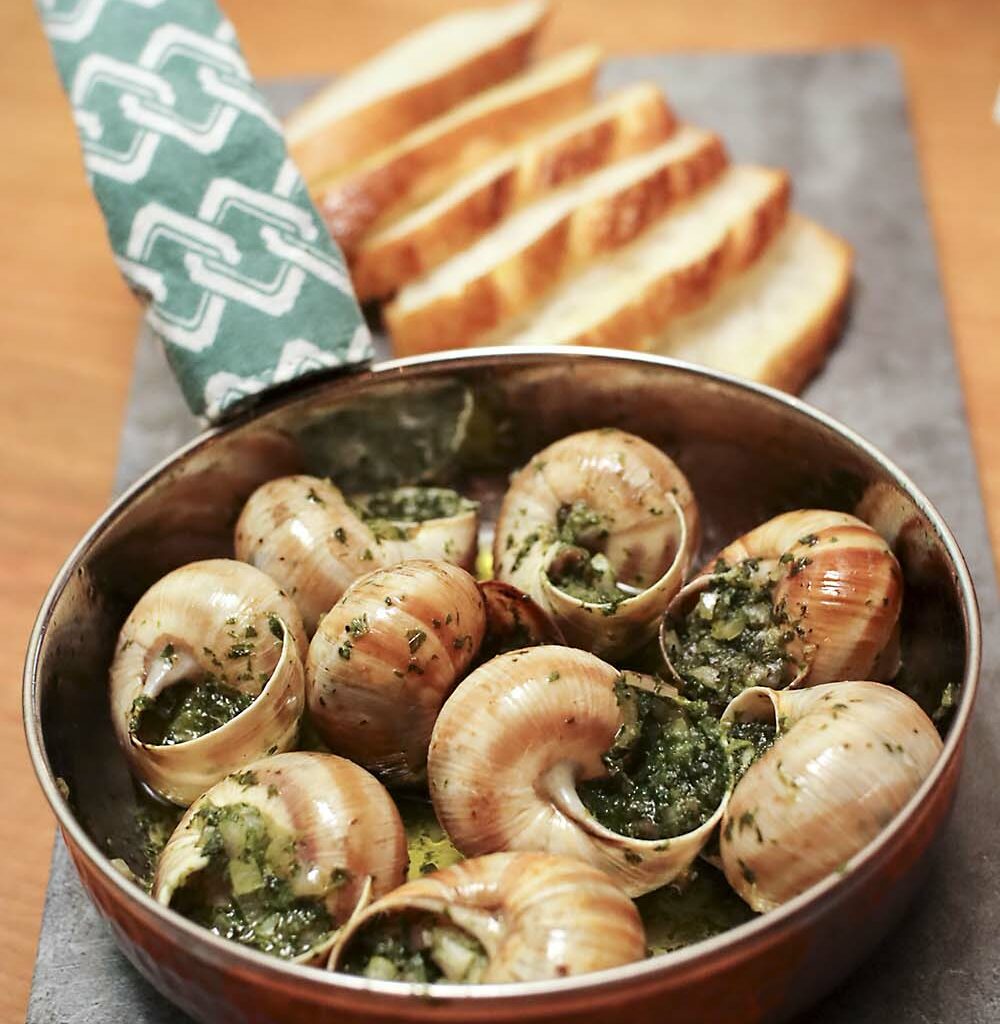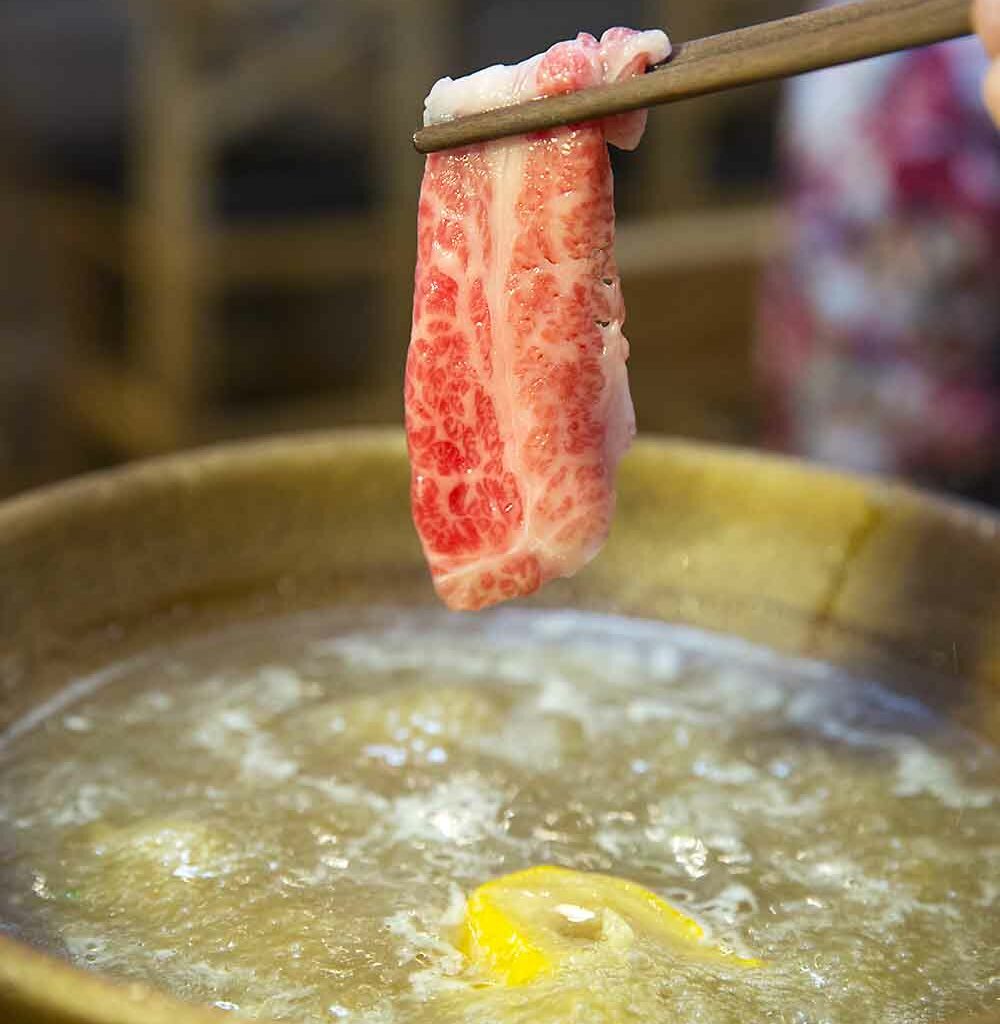Wagyu was once a luxury only available to the very well heeled. Now, it has become something that even aunties talk about in Teochew. I was amazed to find it being sold at heartland supermarkets like the NTUC at Bishan where I sometimes buy my beef. In fact, the Japanese style Shabu Shabu beef has almost completely re-defined the way we eat our steamboats nowadays. In the past we used to have strips of beef which we place in the net to cook in the steamboat. Nowadays, everyone is dipping thinly sliced beef into the hotpot, Shabu Shabu style.
We have the clever cattle ranchers in the US and Austrlia to thank for making Wagyu a household name. With Wagyu now available for less than $80 per kg in some places, you might be wondering why a restaurant like Shabu Shabu Gen can sell a 150g plate of Wagyu slices for $175? Afterall, they don’t even need to cook the beef for you!
Well, the plain and simple answer is that there is Wagyu and then there is real Japanese Wagyu. Real Wagyu must be raised in Japan by Japanese farmers. Wagyu raised in the US and Australia is like Hokkien Mee fried in New York by an American, it somehow just lacks that something.
The Japanese are meticulous about raising their cattle. They are fed okara (the by product of tofu making process) and Japanese grain and the farmers look after them like they are part of the family. The cows are lovingly stroked and massage with sake and they are kept as stress free as possible. Somehow I just cannot imagine a straw chewing cowboy doing that.
Even in Japan, there are many grades of Wagyu. There is a very very exclusive beef called Mishima Gyu which is only accessible to the people whom the rich people call rich. I first heard of Mishima Beef while watching “Iron Chef – Mishima Beef Battle“. Only 20 heads of Mishima Cattle are available every year and I can only hope to watch another documentary on it as I don’t think I would ever get to even smell it.

Chart Showing Beef Marbling Grades
Last year AVA lifted the ban on Japanese beef and so the beautiful “snow frosted” (jap. shimofuri ) Japanese Wagyu is now available in Singapore. So it may be useful to know a little about how the Japanese grade their beef.
You have probably already heard of A5 and A4 Wagyu. The ‘A’ refers to the yield score which essentially means the percentage of the carcass that can be used for meat. The meat is graded A if the yield rate is above 72%.
The number after the ‘A’ is an overall score based several factors including marbling, colour and quality of the meat as well as the texture and the colour and quality of the fat. To score a grade 5 overall, the beef must score highly in each of the different components. The marbling component consists of 12 grades. In order to qualify for A5 grade, you need a Beef Marbling score of between 8 to 12. So when you look at the menu at Shabu Shabu Gen, you will note that they tell you that they only use A4 and A5 beef and that they have a marbling score of 8+. They even tell you the region of Japan where the beef comes from.
You can click here for more info on the Japanese Grading System.
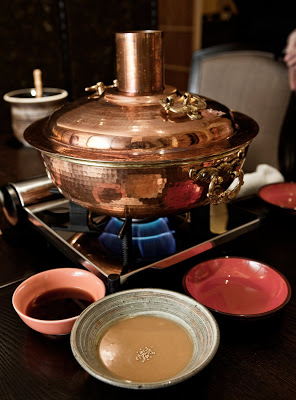
Copper hotpot with premium Goma and Ponzu sauce
So now that you have a plate of the very best beef in the world. It is important that you give due respect to the cow by eating it in the right manner. The Japanese are a very ritualistic about how Shabu Shabu is enjoyed.
I remember the first time I ate Shabu Shabu. I ate it in the style I was accustomed to and started piling all the ingredients into the soup and drinking the soup along the way. But that is not how the Japanese do it. The meat has been so tenderly cared for that the first thing you should do is to eat it as simply as possible. The thin slice of Beef should only be blanched in the hot water for 3 to 4 seconds. Sumosumo was the first to tell me that in Japan, they would swirl the beef into the water to and fro twice, each time repeating the phrase “Shabu…. Shabu….”. After that it is ready to be popped into your mouth to be savoured.
After having a few slices of meat, then all the vegetables get dumped into the soup. In Japan, no one would drink the soup until the end of the meal. The final course is either a bowl of rice or some noodles which would be cooked in the soup and served. Needless to say, this was one of the best Shabu Shabu experiences I have ever had. 4.75/5

Kagoshima Kurobuta Loin $75 per plate
Aside from Japanese Beef, Shabu Shabu Gen also sources top grade Kurobuta Pork which are also some of the best Kurobuta I have eaten. The Goma sauce was an excellent accompaniment to the pork and I was told that the owner of the company who supplies the Goma sauce had to personally come inspect the restaurant before giving approval to supply to the restaurant!
Conclusion
This is probably as close as it gets to a Wagyu Shrine in Singapore. As you walk in, look straight ahead and you can see an “Altar” where the beef is displayed and “Sacrificed”. The Japanese do have a knack of creating a product that might be 5 times the price of the “normal stuff” but which people are still willing to pay because of the quality.
Postscript:
Amazingly, I managed to find this very informative video on Wagyu that even features the Joshu Wagyu from Gunma prefecture which is exactly where my particular plate of Wagyu Beef came from. The program also featured a Wagyu Restaurant where you get to eat Wagyu done in many different ways plus some simple recipes to cook Wagyu at home. Definitely worth watching!
This was an invited review



